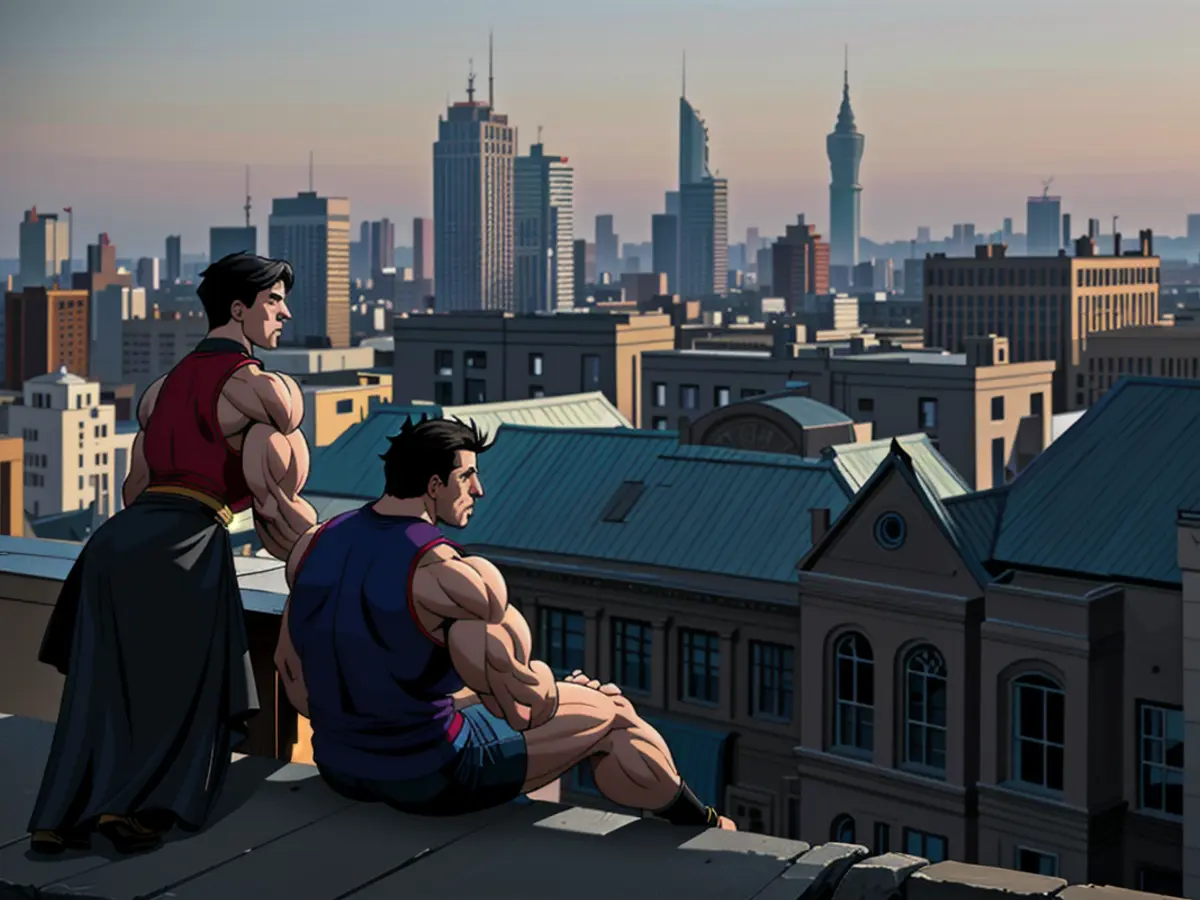Navigating Romance in a Changing Landscape: Young Iranians defy Convention in the Face of Obstacles
Defiant Iranian youngsters flout stringent dating norms
Love knows no boundaries, but it often faces hurdles in Iran. The traditional norms of family and marriage are gradually evolving, as young people brave challenges to seek love on their terms. Yet, for many, the dream of cohabitation or starting a family remains elusive.
Sahar, 35, recalls a time when fear was the order of the day - fear of the morality police, fear of families. "The landscape evolved," she explains. Parents began standing up against the police, challenging their power: "What right do you have to arrest our child? So what, she was with a boy - it's not a big deal?" Brave hearts and strategic minds are necessary for young Iranians who wish to connect.
In the congested streets of Tehran, car windows lower, numbers are exchanged, glances exchanged, then accelerate. "Dor-Dor," cruising the city, is just one of many tactics young people employ to meet each other. They meet in trendy cafes serving as silent matchmaking venues. Dating apps are banned, but many learn to circumvent internet censorship as part of their daily routine.
Self-Determined with Obstacles
Sahar built a successful career as a marketing manager, earning her own income, yet finding love remains elusive. "When I tried Tinder and Bumble, I thought: impending disaster!" she laments. "These apps aren't for dating, they're just for casual hook-ups." Her desire: a genuine connection. "Everything has become so superficial," Sahar laments. Economic security also drives dating dynamics for many.
"It has always been social consensus that the man should be financially better off," Sahar points out. "But now women have careers, own cars, rent apartments - yet this expectation persists. Despite their achievements, many women still chase men who are wealthier than them." Such complications make navigating romantic relationships tough going.
A New Generation Rises
Amir, 20, faces fewer dating issues. He met his girlfriend at a language course, not through "Dor-Dor" or apps. "I know many peers who resort to these methods, but I find it a bit cheap," Amir remarks. His generation, he believes, is more liberated than years past. "At university, no one cares if couples hold hands." However, social disparities persist: "If you're driving an expensive car, the police will overlook you."
From Proposal to "White Marriage"
In traditional circles, living together once required marriage. Families would visit each other, tea would be consumed, expectations voiced - love might not have been a requirement. What mattered was harmony between families. Today, more and more couples opt for "white marriages" - unregistered partnerships. Banned by law but a reality in urban centers. "My mother says: 'That's how it is everywhere in the world' now," Sahar asserts. Her father, though, considers it a catastrophe.
Statistics, though rare, support this trend. In Tehran, for instance, half of all marriages end in divorce[1]. Cultural evolutions and contemporary lifestyles play a role.
The so-called "White Marriage" appears increasingly attractive, particularly due to the high cost and social obligations of a traditional wedding. Yet, women often bear the brunt of disadvantages, as they lack social security and legal claims during separations[2].
A Nation in Transition
Young Iranians are caught in the crosshairs of tradition and modernity. This shift has a profound effect on romantic relationships. "Many no longer accept the inflexible and rigid state laws and make more independent decisions about their lives," remarks a Tehran-based psychologist. Progress in larger cities has deepened, even spreading to rural areas[3]. Local protests highlighting "Woman, Life, Freedom" have accelerated this shift[4]. However, uncertainty has grown as well.
Lack of prospects, rising rents, and financial dependence on relatives create tension. "The dream of shared apartments or families remains unattainable for many," the psychologist notes. Despite the obstacles, young Iranians continue to search for love on their own terms, navigating a complex and ever-changing landscape.
- Iran
- Demographic shift
- Love life
Sources:- [1] IranWire: Marriage and Divorce in Iran: The Real Statistics- [2] Fielding, N. (2018). Single in Iran: How Urbanization Drives Change in Marriage and Divorce Dynamics.- [3] Shirazi, A. (2021). Women's Rights in Contemporary Iran: A Case Study of the One Million Signatures Campaign.- [4] BBC News: Iran Protests: Women remove headscarves in defiance- [5] IRNA: Unemployment rate in Iran normalizing, government official says
- Sahar, an Iranian marketing manager, struggles with the elusive pursuit of love despite her successful career and personal financial independence, suggesting that even in the face of economic security, employment policy, and community policy do not guarantee romantic success.
- Amir, a young Iranian, finds dating less challenging than older generations due to societal liberalization, committing to his girlfriend in a more natural context, yet he still acknowledges the existence of social disparities, such as unequal treatment by the police based on wealth.
- Rents, as a growing concern for young Iranians, contribute to the tension and uncertainty surrounding their ability to attain the dream of shared apartments or families, reflecting a nation in transition, where romantic relationships and familial stability are increasingly complex and intertwined with broader societal changes.








